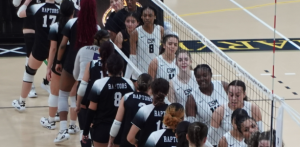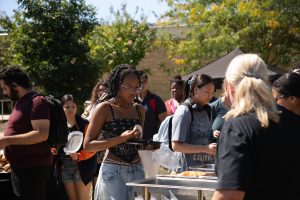Phillipine Life Changes Drastically Under Duterte’s COVID-19 Response
Senior Editor Aiesha Solomon Compares Life in Lubao, Pampanga Before and After the Government’s Coronavirus Response.
This area, once bustling when writer Aiesha Solomon visited a mere two months ago, now only has a handful of patrons.
April 7, 2020
While the U.S. response to COVID-19 included social distancing and shutting down certain businesses to limit the spread of the disease, the Philippines has taken further measures.
In the city of Lubao, Pampanga, the setting is so different from when I visited two months ago. At first, it was just the capital, Manila, that was put into lockdown when Philippine President Rodrigo Duterte announced the efforts the government would go through to contain the coronavirus. Now in order to keep the number of cases in each province low a quarantine has been issued for the 1.5 million people in Pampanga.
After asking my cousin, Ajeil Basquille, who lives in Lubao about the conditions of the quarantine, I learned that the country is not under Marshall Law.
According to Basquille, “…its not under Marshall Law but it feels like it was because of military and police…roaming around time to time to make sure people aren’t on the street…”
She explained that because the province of Panganga is in lockdown people cannot leave or enter even if your family or house is in the area. To further prevent more cases and deaths, police and military are only allowing one person to leave the house get essential items, such as water, food, toiletries, etc. they can only leave with a certain permit.
“Only one quarantine permit per family,” explained Basquille.
When asked if she has one, Basquille said, “Yes, I do have it. They call it a quarantine pass, I need to bring this every time I go outside to get our essentials or food.”
Going through these measures to protect the residents of Pampanga and the entire island, we can only hope that the regulations continue to be effective in keeping as many people as healthy as possible.












